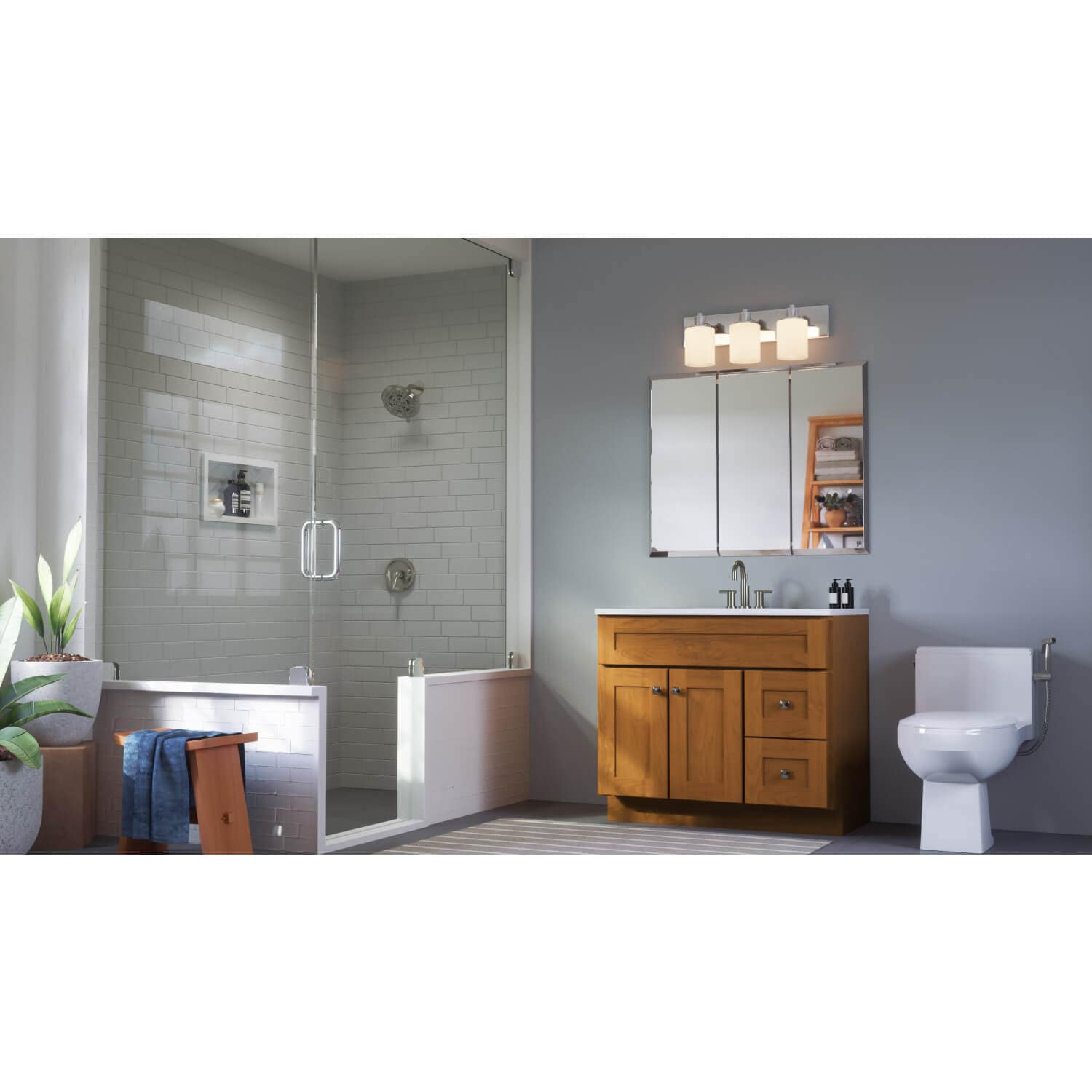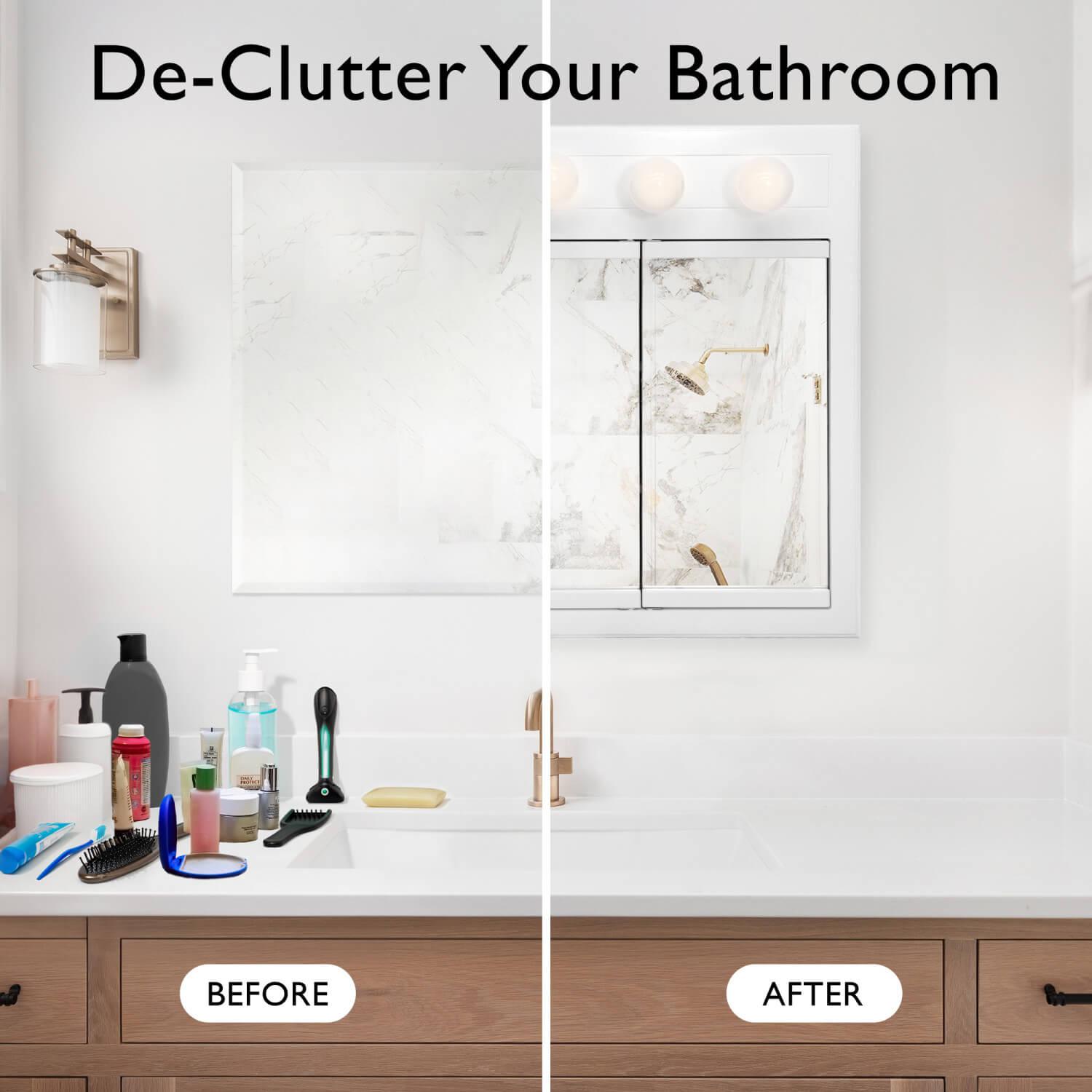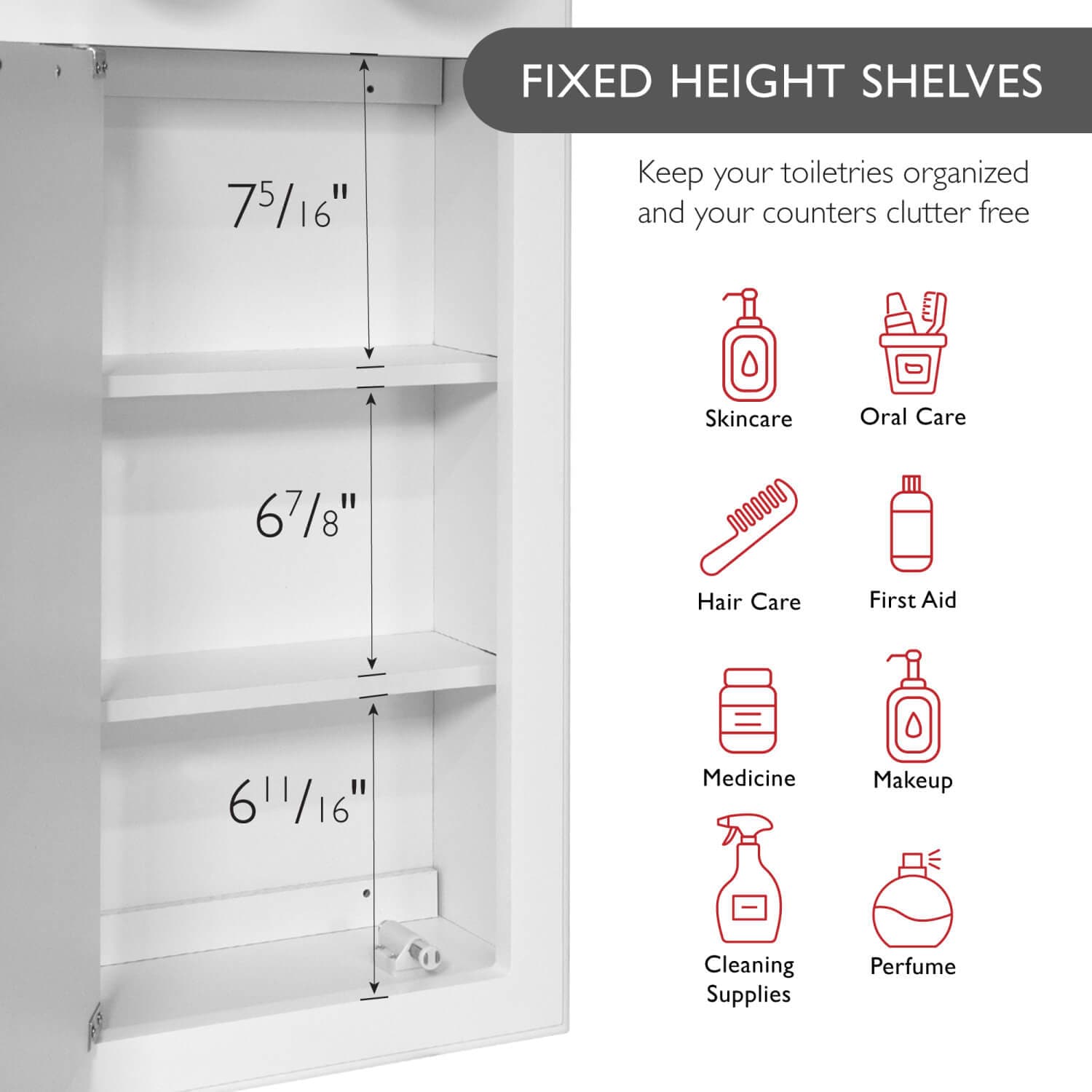Understanding the 36-Inch Wide Medicine Cabinet

The 36-inch wide medicine cabinet is a popular choice for homeowners looking to maximize storage space in their bathrooms. This size offers a balance between ample storage capacity and a compact footprint, making it suitable for various bathroom layouts.
Standard Size and Bathroom Layout
A 36-inch wide medicine cabinet is considered a standard size for bathrooms, particularly in larger bathrooms or those with a double vanity. It fits seamlessly above a standard 36-inch vanity, creating a visually balanced and functional storage solution. The width allows for sufficient space to accommodate toiletries, medications, and other bathroom essentials.
Benefits of a 36-Inch Wide Medicine Cabinet
A 36-inch wide medicine cabinet offers several benefits:
* Increased Storage Capacity: With its wider dimensions, this type of medicine cabinet provides more storage space compared to smaller cabinets. This allows for greater organization and better utilization of the vertical space above the vanity.
* Improved Functionality: The additional width allows for a more versatile layout inside the cabinet. Shelves can be adjusted to accommodate different-sized items, maximizing space efficiency.
* Enhanced Aesthetics: The larger size creates a more prominent visual impact, adding a touch of sophistication to the bathroom decor.
Comparison with Other Sizes
While a 36-inch wide medicine cabinet is a common choice, it’s important to consider other sizes based on individual bathroom needs and space constraints:
* 24-Inch Wide Medicine Cabinet: This size is ideal for smaller bathrooms or powder rooms. It offers a compact storage solution that doesn’t overwhelm the space.
* 30-Inch Wide Medicine Cabinet: This size falls between the 24-inch and 36-inch options, providing a balance of storage capacity and visual impact. It can be suitable for medium-sized bathrooms or those with a single vanity.
Factors to Consider When Choosing a Medicine Cabinet
When choosing a medicine cabinet, several factors should be considered:
* Bathroom Size: The size of your bathroom will determine the appropriate width of the medicine cabinet.
* Storage Needs: Consider the amount of storage space you require for toiletries, medications, and other items.
* Vanity Size: Ensure the medicine cabinet’s width complements the vanity’s dimensions.
* Style: Choose a medicine cabinet that complements the overall style of your bathroom.
Types of 36-Inch Wide Medicine Cabinets: 36 Wide Medicine Cabinet

A 36-inch wide medicine cabinet is a popular choice for bathrooms of all sizes, offering ample storage space for toiletries, medications, and other bathroom essentials. However, the variety of materials, styles, and features available can make choosing the right one a challenge.
Materials Used in Construction
The material used to construct a medicine cabinet can significantly impact its durability, aesthetics, and price. Common materials include:
- Wood: Wood medicine cabinets offer a classic and elegant look. They are typically made from durable hardwoods like oak or maple, which can be stained or painted to match any bathroom decor. However, wood cabinets can be susceptible to moisture damage, so they may require regular maintenance.
- Metal: Metal medicine cabinets, often made from aluminum or steel, are known for their durability and resistance to moisture. They are available in a variety of finishes, including chrome, nickel, and brushed steel, to complement any bathroom style. Metal cabinets can be more expensive than wood cabinets, but they offer superior longevity.
- Mirrored: Mirrored medicine cabinets combine storage with a functional mirror. They are typically constructed with a mirrored front panel that conceals storage compartments behind it. Mirrored cabinets can help to create a sense of spaciousness in a bathroom and are a popular choice for smaller spaces.
Styles and Designs
36-inch wide medicine cabinets come in a variety of styles and designs to suit different bathroom aesthetics. Some common options include:
- Recessed: Recessed medicine cabinets are installed directly into the wall, creating a seamless and integrated look. They are ideal for bathrooms with limited wall space, as they do not protrude from the surface. Recessed cabinets typically require professional installation.
- Surface-Mounted: Surface-mounted medicine cabinets are attached to the wall surface, offering a simple and straightforward installation process. They are available in a wide range of styles and finishes, making them suitable for various bathroom designs.
- Mirrored Doors: Mirrored doors are a common feature of medicine cabinets. They provide a convenient way to check your reflection while also concealing storage compartments behind them. Mirrored doors can be framed or frameless, depending on the desired aesthetic.
Advantages and Disadvantages
Each type of 36-inch wide medicine cabinet has its own unique set of advantages and disadvantages:
- Wood Medicine Cabinets:
Advantages:
- Classic and elegant look
- Can be stained or painted to match any bathroom decor
Disadvantages:
- Susceptible to moisture damage
- May require regular maintenance
- Metal Medicine Cabinets:
Advantages:
- Durable and resistant to moisture
- Available in a variety of finishes
Disadvantages:
- Can be more expensive than wood cabinets
- Mirrored Medicine Cabinets:
Advantages:
- Combine storage with a functional mirror
- Can help to create a sense of spaciousness
- Popular choice for smaller bathrooms
Disadvantages:
- May not be as durable as wood or metal cabinets
- Can be more difficult to clean
- Recessed Medicine Cabinets:
Advantages:
- Seamless and integrated look
- Ideal for bathrooms with limited wall space
Disadvantages:
- Require professional installation
- Can be more expensive than surface-mounted cabinets
- Surface-Mounted Medicine Cabinets:
Advantages:
- Simple and straightforward installation
- Available in a wide range of styles and finishes
Disadvantages:
- May not be as aesthetically pleasing as recessed cabinets
- Mirrored Doors:
Advantages:
- Convenient way to check your reflection
- Conceal storage compartments
Disadvantages:
- Can be more expensive than cabinets with traditional doors
Installation and Maintenance

Installing and maintaining a 36-inch wide medicine cabinet properly ensures its longevity and functionality. This section provides a comprehensive guide on installing and maintaining your medicine cabinet.
Installing a 36-Inch Wide Medicine Cabinet
Installing a 36-inch wide medicine cabinet involves a few steps, ensuring the cabinet is securely mounted and properly aligned.
- Gather necessary tools and materials:
- Stud finder
- Level
- Pencil
- Measuring tape
- Drill
- Screwdriver
- Safety glasses
- Tape measure
- Drywall anchors (if necessary)
- Screws
- Caulk
- Determine the installation location:
- Consider the proximity to electrical outlets and plumbing.
- Ensure the location is accessible and convenient for use.
- Mark the installation location:
- Use a stud finder to locate wall studs for secure mounting.
- Mark the desired location on the wall using a pencil and level.
- Prepare the installation area:
- Remove any existing wall coverings or obstacles in the way.
- Clean the wall surface to ensure a secure bond.
- Mount the medicine cabinet:
- Align the cabinet with the marked location using a level.
- Use a drill to pilot holes for screws, ensuring they are positioned within the wall studs.
- Secure the cabinet to the wall using screws.
- If installing on drywall, use drywall anchors to ensure secure mounting.
- Caulk around the cabinet:
- Apply a bead of caulk around the perimeter of the cabinet to seal any gaps and prevent moisture intrusion.
- Smooth the caulk with a damp finger or a tool designed for that purpose.
Maintaining a 36-Inch Wide Medicine Cabinet, 36 wide medicine cabinet
Maintaining your medicine cabinet ensures its long-term functionality and appearance.
- Regular cleaning:
- Clean the cabinet regularly using a mild soap and water solution.
- Avoid using harsh chemicals or abrasive cleaners, as these can damage the cabinet’s finish.
- Inspect for damage:
- Regularly inspect the cabinet for any signs of damage, such as cracks, scratches, or loose hardware.
- Address any damage promptly to prevent further deterioration.
- Lubricate hinges and hardware:
- Periodically lubricate the cabinet’s hinges and hardware with a light oil to ensure smooth operation.
- This helps prevent squeaking and ensures the cabinet opens and closes easily.
Potential Issues During Installation or Maintenance
Issues can arise during installation or maintenance, but these can be addressed with the right solutions.
- Uneven installation:
- Use a level to ensure the cabinet is mounted evenly.
- If the cabinet is uneven, loosen the screws and adjust the position until it is level.
- Loose screws:
- Tighten any loose screws to ensure the cabinet is securely mounted.
- If the screws are stripped, replace them with new screws of the appropriate size.
- Damaged hinges:
- Replace damaged hinges with new ones.
- Ensure the new hinges are compatible with the cabinet.
36 wide medicine cabinet – A 36″ wide medicine cabinet is a great way to add storage space to your bathroom without taking up too much floor space. If you’re going for a coastal vibe, you might want to consider pairing it with stiffkey blue kitchen cabinets.
The blue color is super calming and can really tie the room together. And don’t forget to accessorize with some beachy-themed decor! A 36″ wide medicine cabinet is a versatile piece that can be styled in many different ways.
A 36-inch wide medicine cabinet is a great way to add storage to your bathroom, but if you’re looking for something a little more stylish and open, consider open shelving lower kitchen cabinets for your bathroom. They can add a modern touch to your space and make it feel more spacious.
If you’re going for a more minimalist look, you can even use open shelving for your medicine cabinet, and just keep the essentials visible.
